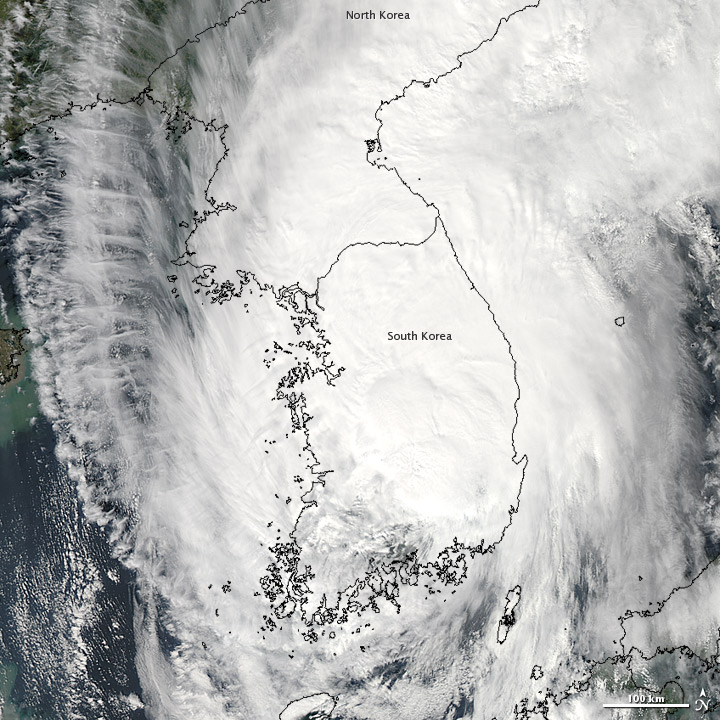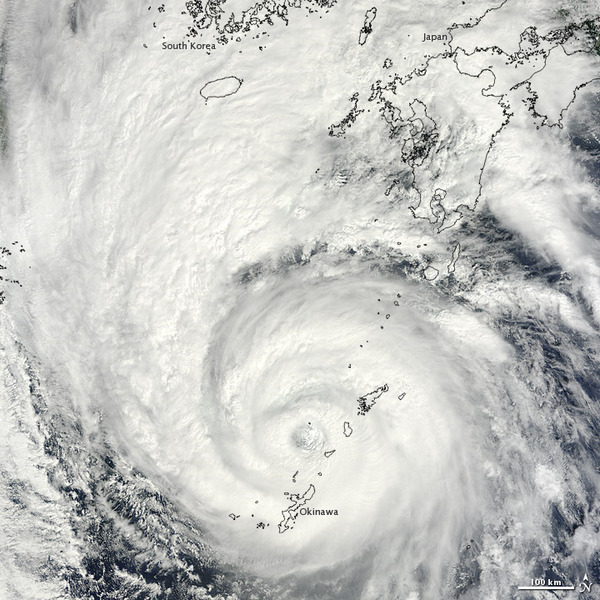Satellite Sees Typhoon Sanba Wallop Japan, Korea

NASA's Terra satellite captured images of Typhoon Sanba as it engulfed the Korean peninsula earlier today (Sept. 17) and Okinawa, Japan, yesterday.
The storm caused torrential rains throughout South Korea, resulting in landslides and at least one death, according to the Associated Press.
When it struck Japan yesterday, Typhoon Sanba boasted winds of up to 127 mph (205 kph) and also dropped massive amounts of rain in that country, leaving thousands without power and canceling hundreds of flights.
It has since weakened dramatically, and today, shortly after the first image was taken, Sanba was downgraded to a tropical storm. It currently has maximum sustained winds of 52 mph (83 kph), with gusts up to 63 mph (102 kph), according to the Joint Typhoon Warning Center (run by the U.S. Navy and Air Force).
At its strongest, Sanba was a super typhoon with winds equivalent to those in a Category 5 hurricane.
It is currently centered over the Taebaek Mountain Range and is producing large amounts of rain over the high, rugged terrain. The storm is moving to the north at 23 mph (37 kph) and is expected to continue weakening before reaching the Sea of Japan, and bringing rain to China, according to NASA.
Sanba is the third major typhoon to hit the Korean peninsula in two months’ time, AFP reported.
Breaking space news, the latest updates on rocket launches, skywatching events and more!
This story was provided by Our Amazing Planet, a sister site to SPACE.com. Reach Douglas Main at dmain@techmedianetwork.com. Follow him on Twitter @Douglas_Main. Follow OurAmazingPlanet on Twitter @OAPlanet. We're also on Facebook and Google+.
OurAmazingPlanet was founded in 2010 by TechMediaNetwork, which owned Space.com at the time. OurAmazingPlanet was dedicated to celebrating Earth and the mysteries still to be answered in its ecosystems, from the top of the world to the bottom of the sea. The website published stories until 2017, and was incorporated into LiveScience's Earth section.


